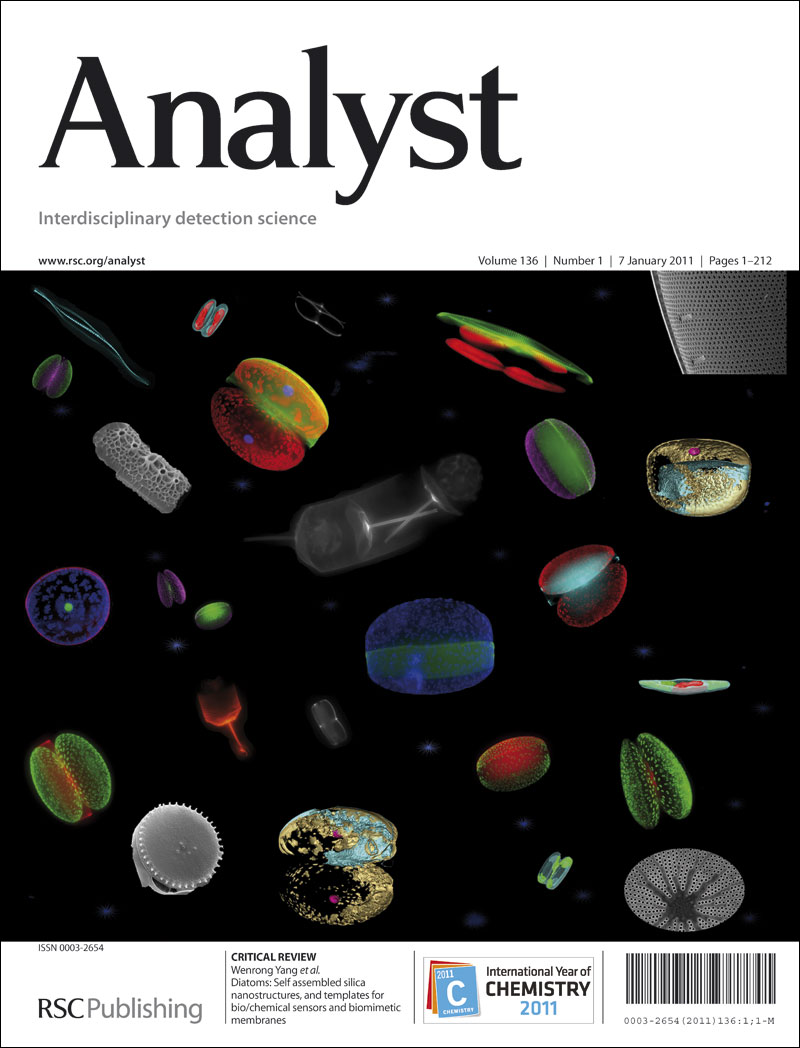Determination of airborne metal-containing nanoparticles in a historic mining area using single particle ICP-MS
IF 3.3
3区 化学
Q2 CHEMISTRY, ANALYTICAL
引用次数: 0
Abstract
Given limited information on airborne metal-containing NPs—a highly bioaccessible fraction of metals relevant to human exposure—in the upper Meža Valley, a historic mining area in Slovenia, this study aimed to assess their presence in PM10 air filters from the region using the spICP-MS method. The extraction procedure, refined using a certified reference material of PM10-like fine dust deposited on filters, achieved an extraction efficiency of 9.1% for Zn- and 14.0% for Pb-containing NPs after two hours of ultrasonication in 10 mM sodium pyrophosphate. The method proved effective for detecting metal-containing NPs in PM10 from mining and smelting areas, as demonstrated by a case study from the upper Meža Valley. SpICP-MS analyses identified both Zn- and Pb-containing NPs in PM10 samples, with 0.6–3.8% of Zn and 0.3–1.7% of Pb extracted as NPs. Additionally, SEM-EDS analysis confirmed the presence of Zn- and Pb-containing (nano)particles of different chemical compositions. This study is the first to report the occurrence of metal-containing NPs in PM10 from this region. Although they represent only a small fraction of total Zn and Pb in the samples, NPs are more bioaccessible and thus more relevant for assessing local population's exposure to these particles.

用单颗粒ICP-MS测定历史矿区空气中含金属纳米颗粒
鉴于在斯洛文尼亚历史悠久的Meža山谷上游地区,空气中含金属的nps(一种与人类接触有关的高度生物可接近的金属成分)的信息有限,本研究旨在使用spICP-MS方法评估该地区PM10空气过滤器中nps的存在。在10 mM焦磷酸钠溶液中超声作用2小时后,该提取方法使用沉积在过滤器上的pm10样细尘的认证参考物质进行精炼,对Zn-和pb - NPs的提取效率分别为9.1%和14.0%。通过对Meža上游河谷的案例研究,证明了该方法对矿山和冶炼地区PM10中含金属NPs的检测是有效的。SpICP-MS分析发现PM10样品中含有Zn和Pb的NPs,其中Zn含量为0.6-3.8%,Pb含量为0.3-1.7%。此外,SEM-EDS分析证实了不同化学成分的含锌和含铅(纳米)颗粒的存在。本研究首次报道了该地区PM10中存在含金属NPs。虽然它们只占样品中总锌和铅的一小部分,但NPs更具生物可及性,因此与评估当地人口对这些颗粒的暴露更相关。
本文章由计算机程序翻译,如有差异,请以英文原文为准。
求助全文
约1分钟内获得全文
求助全文
来源期刊

Analyst
化学-分析化学
CiteScore
7.80
自引率
4.80%
发文量
636
审稿时长
1.9 months
期刊介绍:
"Analyst" journal is the home of premier fundamental discoveries, inventions and applications in the analytical and bioanalytical sciences.
 求助内容:
求助内容: 应助结果提醒方式:
应助结果提醒方式:


